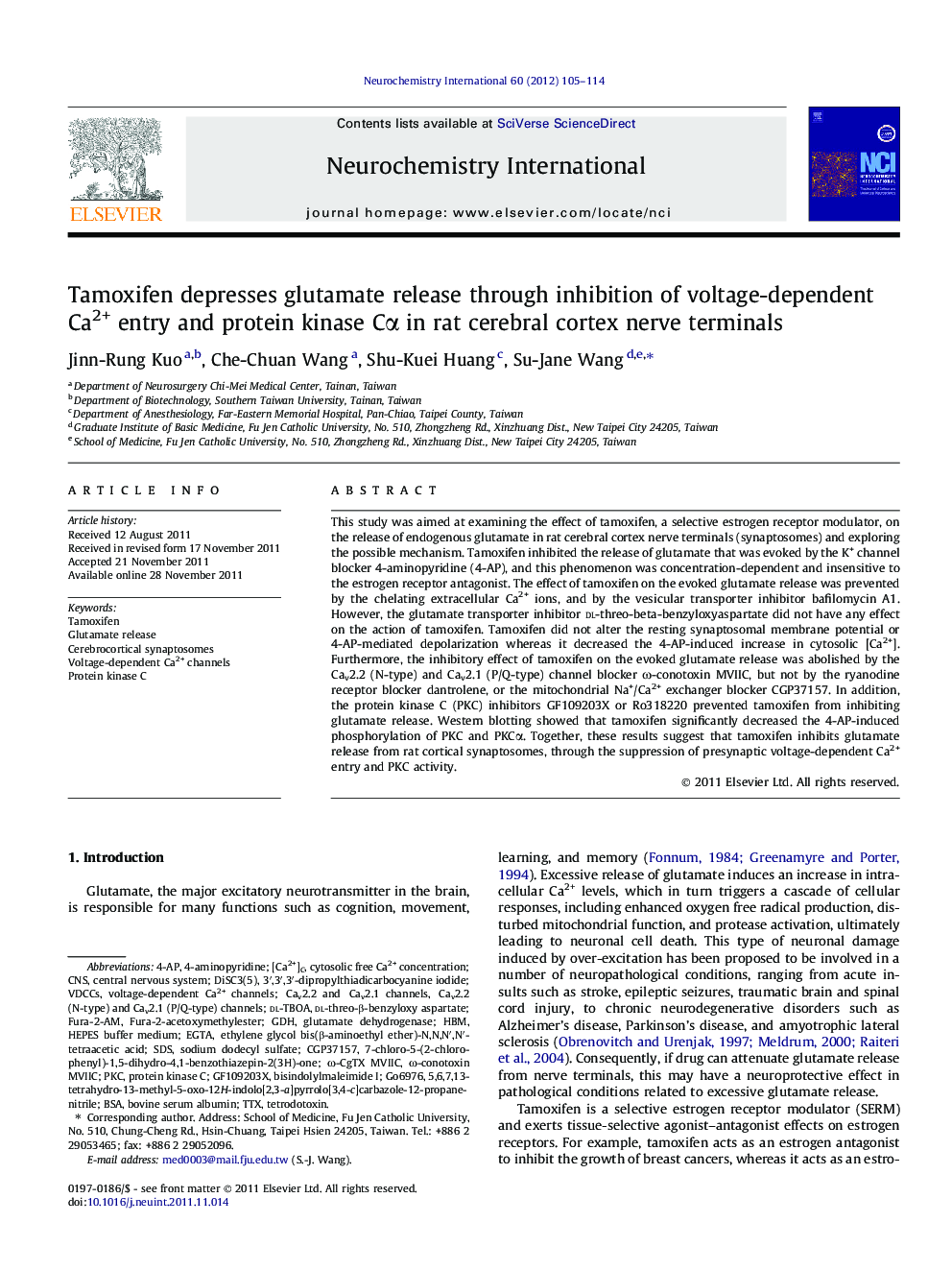| Article ID | Journal | Published Year | Pages | File Type |
|---|---|---|---|---|
| 2200866 | Neurochemistry International | 2012 | 10 Pages |
This study was aimed at examining the effect of tamoxifen, a selective estrogen receptor modulator, on the release of endogenous glutamate in rat cerebral cortex nerve terminals (synaptosomes) and exploring the possible mechanism. Tamoxifen inhibited the release of glutamate that was evoked by the K+ channel blocker 4-aminopyridine (4-AP), and this phenomenon was concentration-dependent and insensitive to the estrogen receptor antagonist. The effect of tamoxifen on the evoked glutamate release was prevented by the chelating extracellular Ca2+ ions, and by the vesicular transporter inhibitor bafilomycin A1. However, the glutamate transporter inhibitor dl-threo-beta-benzyloxyaspartate did not have any effect on the action of tamoxifen. Tamoxifen did not alter the resting synaptosomal membrane potential or 4-AP-mediated depolarization whereas it decreased the 4-AP-induced increase in cytosolic [Ca2+]. Furthermore, the inhibitory effect of tamoxifen on the evoked glutamate release was abolished by the Cav2.2 (N-type) and Cav2.1 (P/Q-type) channel blocker ω-conotoxin MVIIC, but not by the ryanodine receptor blocker dantrolene, or the mitochondrial Na+/Ca2+ exchanger blocker CGP37157. In addition, the protein kinase C (PKC) inhibitors GF109203X or Ro318220 prevented tamoxifen from inhibiting glutamate release. Western blotting showed that tamoxifen significantly decreased the 4-AP-induced phosphorylation of PKC and PKCα. Together, these results suggest that tamoxifen inhibits glutamate release from rat cortical synaptosomes, through the suppression of presynaptic voltage-dependent Ca2+ entry and PKC activity.
► Tamoxifen inhibited glutamate release from rat cerebrocortical synaptosomes. ► This action was rapid, and did not involve the participation of estrogen receptors. ► A decrease in the Ca2+ influx through Cav2.2 and Cav2.1 channels was involved. ► A role for the PKCα pathway in the action of tamoxifen was suggested. ► This study provided further understanding of the mode of tamoxifen action in the brain.
